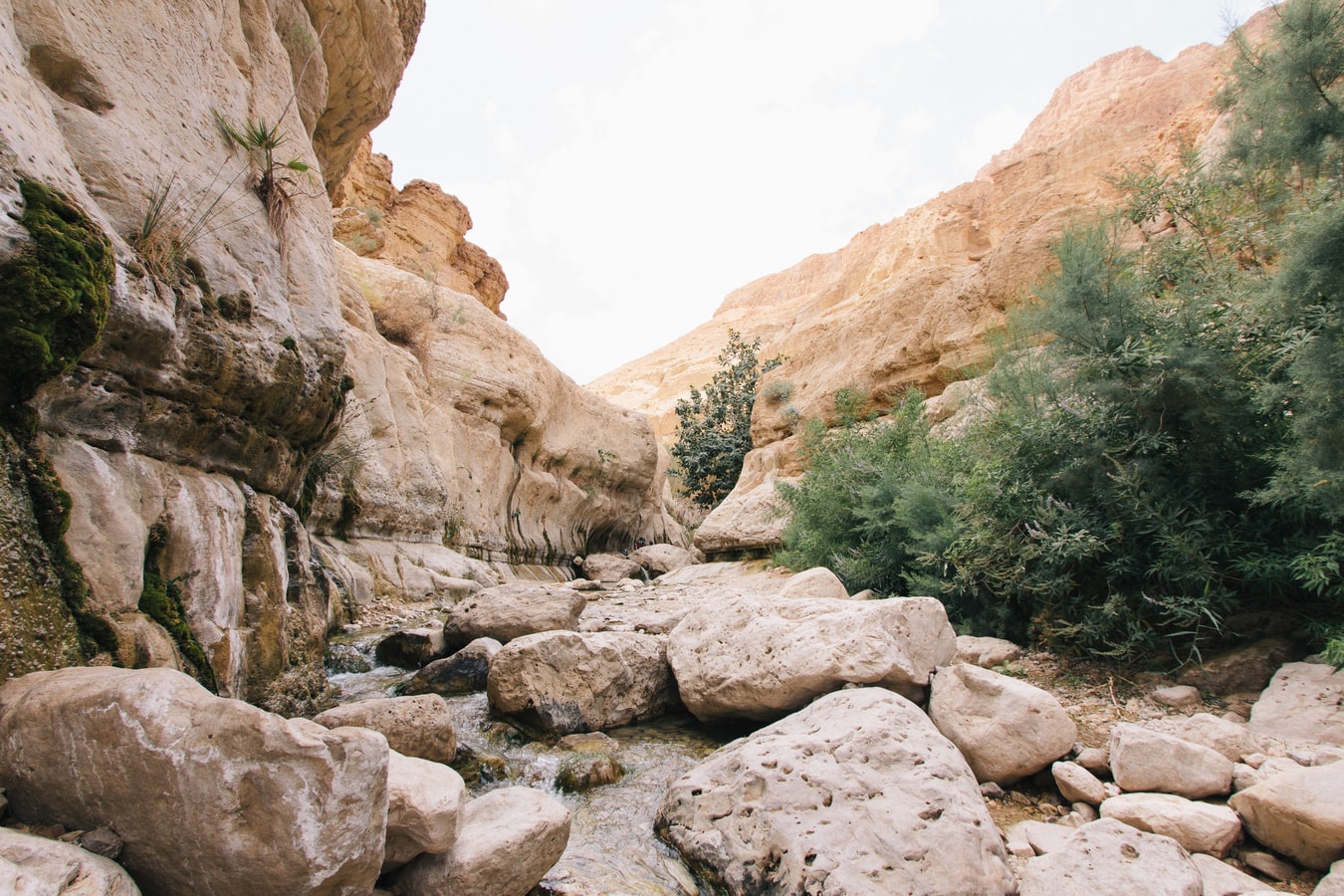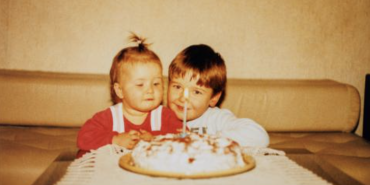Three Generations Walk in the Footsteps of Jesus

"Early in the morning, Jesus stood on the shore, but the disciples did not realize that it was Jesus. He called out to them, 'Friends, haven't you any fish?'" (John 21:5).
The Sea of Galilee was calm that hazy, sunny afternoon in early January. Pebbles and broken shells lined the beach, scrunching beneath the feet of Carey Cook, his son, Sam Cook, and his father, R. Franklin Cook.
Their hearts burst with wonder.
On this beach, Jesus, after His resurrection, called to His disciples who were fishing about 100 yards out. He cooked them a breakfast of fish and bread and restored Peter, saying, "Feed my sheep" (John 21:17).
Earlier, Jesus fed more than 5,000 people in the area and walked on water.
"Our Father in heaven had been here before, and now the three of us were here," said Carey, vice president for student development at Northwest Nazarene University. "It's really hard to put into words. There was an awesomeness of standing there in that place, and feeling the presence of God." Carey also said he was deeply moved watching his son look out over the sea and contemplate the life of Jesus.
For Carey and his son, Sam, 18, the trip was an inaugural journey to the Holy Land, a present for Sam, a freshman at Northwest Nazarene University.
"You hear the stories as you grow up, but it gives you a different perspective to be there," Sam said. "It gave me a concrete image about where it all happened."
For Franklin, who made a number of trips to Israel as director of the Eurasia Region of the Church of the Nazarene before retiring, the thrill was sharing these sacred places with his son and grandson. "They were amazed and astonished over and over at actually standing on or being at a place that was so familiar from the Scriptures, whether it was the Galilee or the steps Jesus walked up," he said. "It was interesting for me to watch them."
However, he still remembers his first visit in 1990. "I arrived at night, and the floodlights were on the walls of the Old City," Franklin said. "That just knocked me over, just the walls. I thought, 'I can't believe I'm here.'"
On their six-day tour, the group spent most of their time in Jerusalem, Nazareth, Bethlehem, Galilee, and an area of the Dead Sea.
At Capernaum, they visited the ruins thought to be Peter's home. A Franciscan Church with a glass floor has protected them since 1990, but visitors can climb under and look into the rooms, as Sam did.
A stone's throw away from Peter's home in Capernaum is a synagogue built over the one in which Jesus likely taught.
Franklin said there are levels of certainty about where different biblical events occurred, but historians and archaeologists are fairly sure about some, such as the tomb where Jesus was buried and the southern steps of the Temple Mount.
It can be perplexing, when first studying or visiting the Holy Land, to find churches, synagogues, and mosques covering the most holy spots. However, the buildings, many built by the Catholic Church, actually have protected them from destruction for centuries.
In Jerusalem, the Cooks climbed the southern steps that were the main entrance to the Temple Mount 2,000 years ago. "Jesus would have walked up them to enter the temple and overturn the tables of the moneychangers," Carey said. "Some of the steps have been restored, but many are original and show the wear of time."
"I really liked the Temple Mount and that area," Sam said. "It's pretty much restored, and you can see what it was like."
The Cooks prayed together at the Western Wall of the Temple Mount, walked the Via Dolorosa, the way of Jesus' suffering, and stood in the empty Garden Tomb where He was buried and rose again.
"To stand in the tomb with my son was pretty overwhelming," Carey said.
The Cooks were captivated by the history shared by their tour guide, Lindell Browning, a Nazarene missionary in the Holy Land for 30 years. "He was able to give us the perspective as we saw these different places, like the area where the Last Supper was," Carey said. "The stories he's able to tell, and bring it to life as you're looking at these sites, were pretty powerful."
Carey said the tour gave Sam a chance to know his grandfather better. "He got to hear a lot of stories about my dad that he probably never would have known, stories of when he was regional director and growing up stories of when he was in India," he said.
They stayed in the same hostel, St. Andrew's Scottish Guest House, where Franklin tarried in 1990 and from which he first surveyed the lighted walls of the Old City. Their favorite dish was shawarma, sliced meat wrapped in pita bread.
In the way of remembrances, Sam purchased a necklace with a Cross of Jerusalem emblem, while Carey found a little shop on the Via Dolorosa selling photo prints taken in the area in the 1920s, 1930s, and 1940s. One print he bought shows a shepherd leading the sheep out into the countryside in 1940. The other features two gentlemen walking up steps in a Jerusalem street in 1939.
But an everlasting impression from the journey has been the strengthening of their spiritual lives. They said. "The words of the songs, the words of the Scripture, and the words the pastor uses are more alive."
"Just can't get over a trip to Israel," Franklin said.
Sandra Forester is a journalist in Boise, Idaho.
Holiness Today, July/August 2011
Please note: This article was originally published in 2011. All facts, figures, and titles were accurate to the best of our knowledge at that time but may have since changed.




